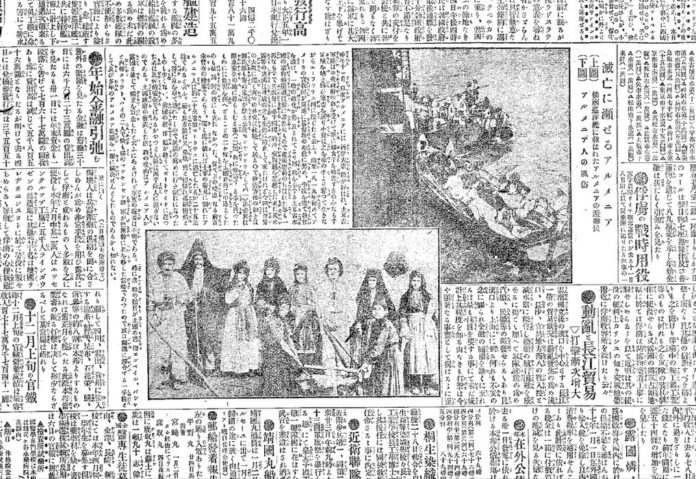By Astghik Hovhannisyan
Senior lecturer, Russia-Armenian University, Yerevan
Visiting researcher, Ritsumeikan University, Japan
TOKYO – On November 7, 1918 the Japanese newspaper Asahi published an article titled “Mass Killings of Armenians: One Million [Killed] in One Year,” mentioning massacres of Armenians in the Ottoman Empire, US Ambassador Henry Morgenthau Sr.’s testimonies, and Pan-Turkic ideas.
This was not the first time for a Japanese newspaper to write about the Armenian Genocide. In fact, “national newspapers” such as Asahi and Yomiuri regularly wrote about killings of Armenians in the Ottoman Empire both during the Hamidian massacres (1894-1896) and the Armenian Genocide. The topic also appeared in some magazines and other types of publications. It is difficult to estimate what percentage of Japanese people was familiar with the subject, but given the fact that Asahi and Yomiuri had a large readership, we can suppose that at least a small percentage was aware of what was happening in the Ottoman Empire.
Heghine Melik-Haykazyan, an Armenian woman who traveled to Japan at the end of the 19th or the beginning of the 20th century, in her memoir titled Travelling Around Japan (Mi Ptoyt Japonum, 1905) mentions that she met a Japanese man in Kyoto who, upon learning that she was Armenian, asked; “Of those Armenians who constantly fight against the Turks?” Astonished, Melik-Haykazyan asked if he knew about Armenians, and the man answered: “Of course. I remember there were massacres a few years earlier, and a missionary was asking for donations to send to you [your country]. How is the situation in your country now?” (p. 157). This episode also demonstrates that at least some Japanese people were aware of Armenians and their fate in the Ottoman Empire.








